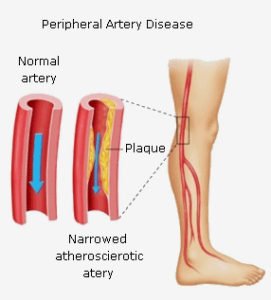
- This event has passed.
Peripheral Artery Disease Screening
November 29, 2018 @ 11:00 am - 2:00 pm
FREE PAD (Peripheral Artery Disease) is a common disease caused by a buildup of fatty deposits in the blood vessels of the legs.
PAD (Peripheral Artery Disease) is a common disease caused by a buildup of fatty deposits in the blood vessels of the legs.
A symptom of PAD is described as a cramping or aching in the calf, thigh, or buttock that comes on with walking and is relieved by rest. That is why we tell people to “Listen to your Legs.” The discomfort is caused by the decreased blood supply to the leg muscles during physical activity.
The trained PAD Rehab nurses are conducting a FREE SCREENING on Thursday, November 29 from 11am – 2pm at Glacial Ridge Hospital, Outreach Services. Call Joni at 320.334.5433 to sign-up for a free screening if you have PAD symptoms or any of these risk factors:
- Diabetes
- High blood pressure
- High cholesterol
- You smoke or have a history of smoking
- Age 65 or older
PAD is diagnosed by using the Ankle-Brachial Index test. Allow approximately 30 minutes for the test. You will receive your results immediately following the screening.



